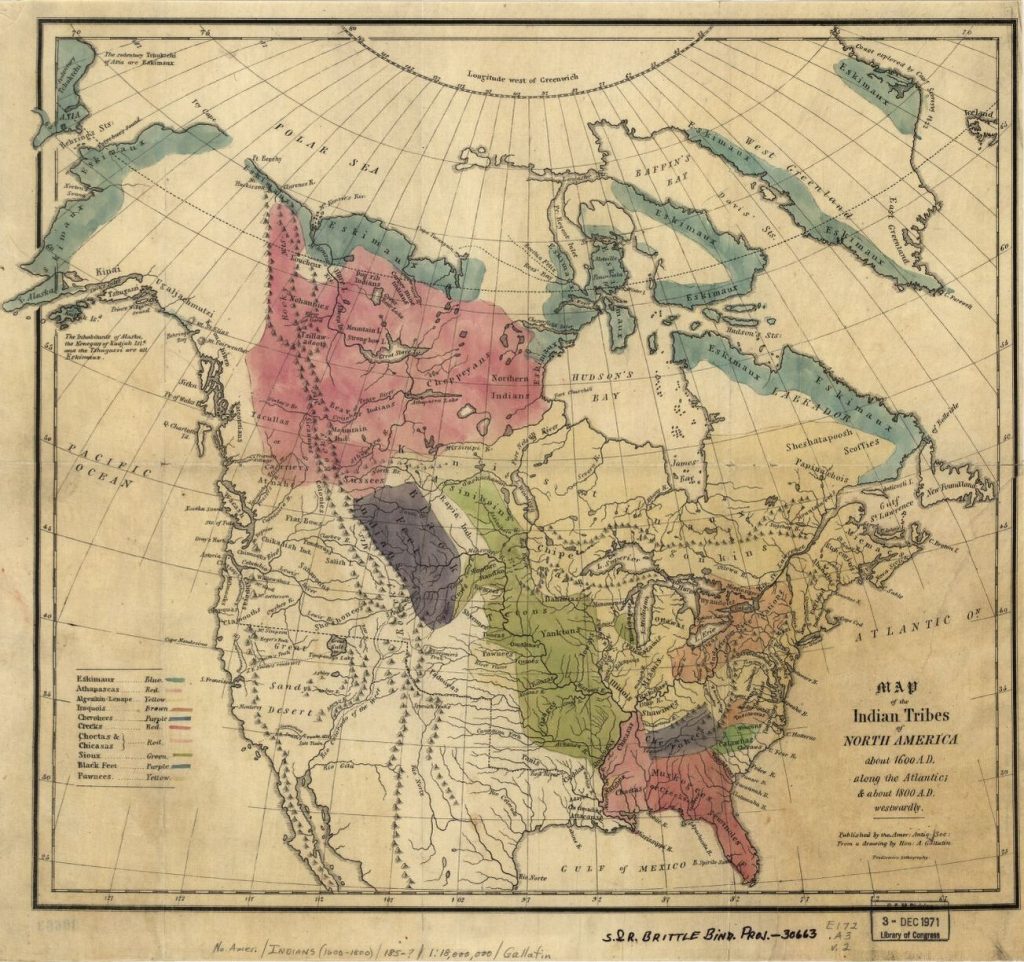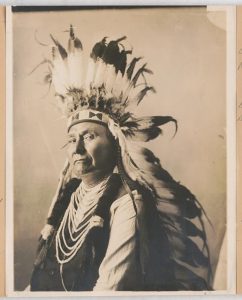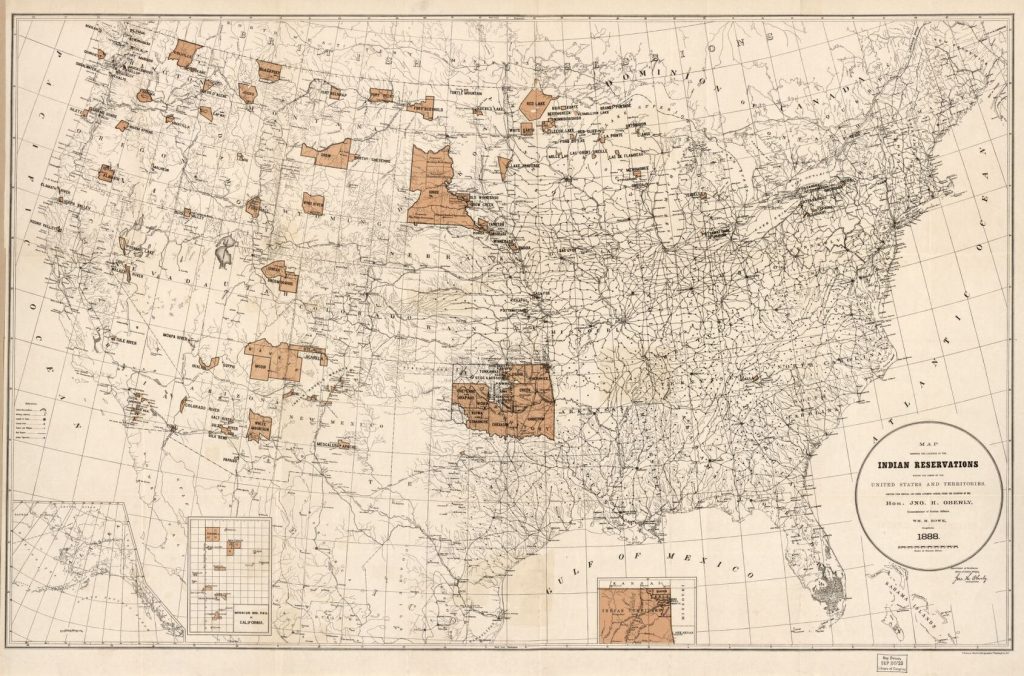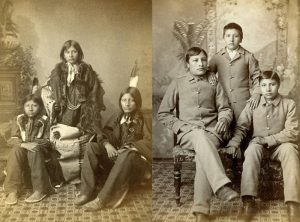The Beginning of Native American Oppression and Early Impact:
The migration of Europeans seeking asylum in the United States forced westward expansion. Immigrants imposed themselves on a peaceful nation, stole resources, murdered those existing there for 10,000 years, and then claimed the land as their own. There were even several attempts made by these “New Americans” to rid of the Natives. All attempts for extermination were informal as they were not instated by law, this included gifting the Natives smallpox infected blankets, encouragement of hunting the Indigenous people, and destruction of property and resources.
As a race Native Americans were discriminated and targeted purely for the progression of the American economy. If settlers were able to cultivate Western lands this would enable the building of railroads, and mass transportation of goods across the country. Laws were created that inhibited them based purely off their ethnicity and they were targeted because they were a small minority with less advanced weaponry. The indigenous American population shrunk from 135 million people to 5 million between 1691 and the late 1960’s (Rensink 2011, pp 15-36). This massacre occurred at the hands of European settlers and their descendants for several reasons. The two main causes were the foundation of reservations and extortion of Native Americans all in the name of civilizing the western United States. What Americans did to the indigenous people was morally wrong, and illegal. There were several problems in regards to the ways the Native Americans were treated whether or not the United States government chose to label them as citizens or aliens. Since American Indians were born in America they automatically achieved the status of citizens and should have been permitted access to all rights and liberties extended to other Americans as dictated by the fourteenth amendment. If the government categorized them as foreigners they should have received inalienable rights, as determined by the Equal Protection Clause. Either way discriminatory and prejudice actions were taken against them when the American Constitution should have protected them from being held against their will, subjected to inhumane conversion techniques, and exiled from their land.
Precedent of the Indian Removal Act of 1830 and the Birth of Reservations:

Map of Indian Tribes in North America several years after the Indian Removal Act (Gallatin 1836, Map of Indian Tribes of North America)
1830 was the beginning of a new era. In May, President Andrew Johnson passed the Indian Removal Act, which called for the eviction of the five recognized tribes; Cherokee, Choctaw, Seminole, Creek, and Muscogee off of American land and required their migration to designated living areas called reservations (U.S. Department of State 2015, pp 4 – 6). Many fought back, but eventually rebellious forces were subdued and surrendered to the United States. Chief Joseph of the Nez Perce, Geronimo of the Bedonkohe Apache tribe, Sitting Bull of the Hunkpapa Lakota people, and Crazy Horse of the Oglala Lakota tribe were some of the most famous revolutionary leaders of the time.

Chief Joseph (Gill 1900, Portrait Chief Joseph)
Chief Joseph led rebellions against the United States for many years, all for the freedom of his people. In 1877 on an attempted escape to Canada he and his tribe were captured by the U.S government. Chief Joseph and his tribe were forced to surrender, as they could not compete with the advancement of the United States military’s weapons. He delivered a speech in Washington pleading for the protection of his people and a chance for them to conform to the changing world. He begs to be a free man citing the amendments created after the Civil War as reason that he deserves to be treated not only American but also a human (Joseph 1877, 622).
In 1881, after becoming the 21st president Arthur A. Chester, devised a law to civilize the remaining Native Americans. His proposition had the intention of sophisticating Indians. By doing so he believed they would be prepared to integrate into society. His objectives included that Native children should be educated by white school teachers off of reservations and away from savage lifestyles, each family would be given land, and individuals would receive some but not all rights. He concluded that representation in the court of law was necessary but voting should not be granted.
“The Indian should receive the protection of the law. He should be allowed to maintain in court his rights of person and property. He has repeatedly begged for this privilege. Its exercise would be very valuable to him in his progress toward civilization. Second. Of even greater importance is a measure which has been frequently recommended by my predecessors in office, and in furtherance of which several bills have been from time to time introduced in both Houses of Congress. The enactment of a general law permitting the allotment in severalty, to such Indians, at least, as desire it, of a reasonable quantity of land secured to them by patent, and for their own protection made inalienable for twenty or twenty-five years, is demanded for their present welfare and their permanent advancement. Third. I advise a liberal appropriation for the support of Indian schools, because of my confident belief that such a course is consistent with the wisest economy… They are doubtless much more potent for good than the day schools upon the reservation, as the pupils are altogether separated from the surroundings of savage life, and brought into constant contact with civilization” (Arthur A. Chester 1881, First Annual Message to Congress).
The design of his plan would have elevated the status of Native Americans without making a strong minority equal to the remainder of the population. Under the Dawes Act land owned by the 5 recognized Native American tribes was taken and divided among members within the tribe by the government. If Natives agreed to the terms they would be given a plot land and U.S. citizenship. However, they would lose affiliation with their tribe, as well as their community, and their culture (Dawes Act 1887, General Allotment Act). Afterwards, it was found that vast portions of the land promised to them had been gifted to white settlers instead.

Map of Indian Reservations and territories within the United States, 50 years after the Indian Removal Act (Office of Indian Affairs 1888, Map of Indian Reservations)
Following the mass genocide of the Native Americans and removal off their ancestral lands the remaining survivors inhabited 326 nationally recognized reservations across the United States (Indian Affairs 2015, What is a Federal Indian Reservation).
Native American Boarding Schools and Lasting Effect:
Boarding schools began popping up on the east coast under the banner, “Kill the Indian and save the man”, indigenous children were sent by their parents so that they might transition into society (Pratt 1892, pp 1). These schools advertised their ability to teach Native children school subjects such as English, math, and art as well as etiquette. The founder of the Carlisle Industrial Indian School, General Henry Pratt, designed the school so that Native children would get the necessary training needed in order to lead a life of labor work. He felt that Indians were not equal to whites and because of this they wound not be able to hold a job that requires the ability to think individually. He was quoted saying, “they must make a living by the sweat of their brow, and not their brains” (Pratt 1892, pp 17). Pratt and teachers white washed and dehumanized two generations of Native Americans. The schools became breeding grounds for unfamiliar diseases such as tuberculosis, small pox, chicken pox, and influenza. Students lived a military lifestyle, had their hair cut, wore uniforms, and weren’t allowed to speak in their native tongue. Disobedience and failure to comply with the rules was met with swift punishment. Conversion to white society was harsh and many children died from disease and abuse. Between 1879 and 1906 it is reported that 195 children died at the Carlisle Indian School, the actual number of deceased kids is closer to 500 (Carlisle Indian School 1906, Death Record). In the end very little was achieved in Indian boarding schools.

Before and after photos (Choate 1883,Three Sioux Boys)
As of today Native Americans have received no indemnification, still live on reservations with some of the highest poverty rates, alcoholism rates, gambling and drug addictions in the country.
